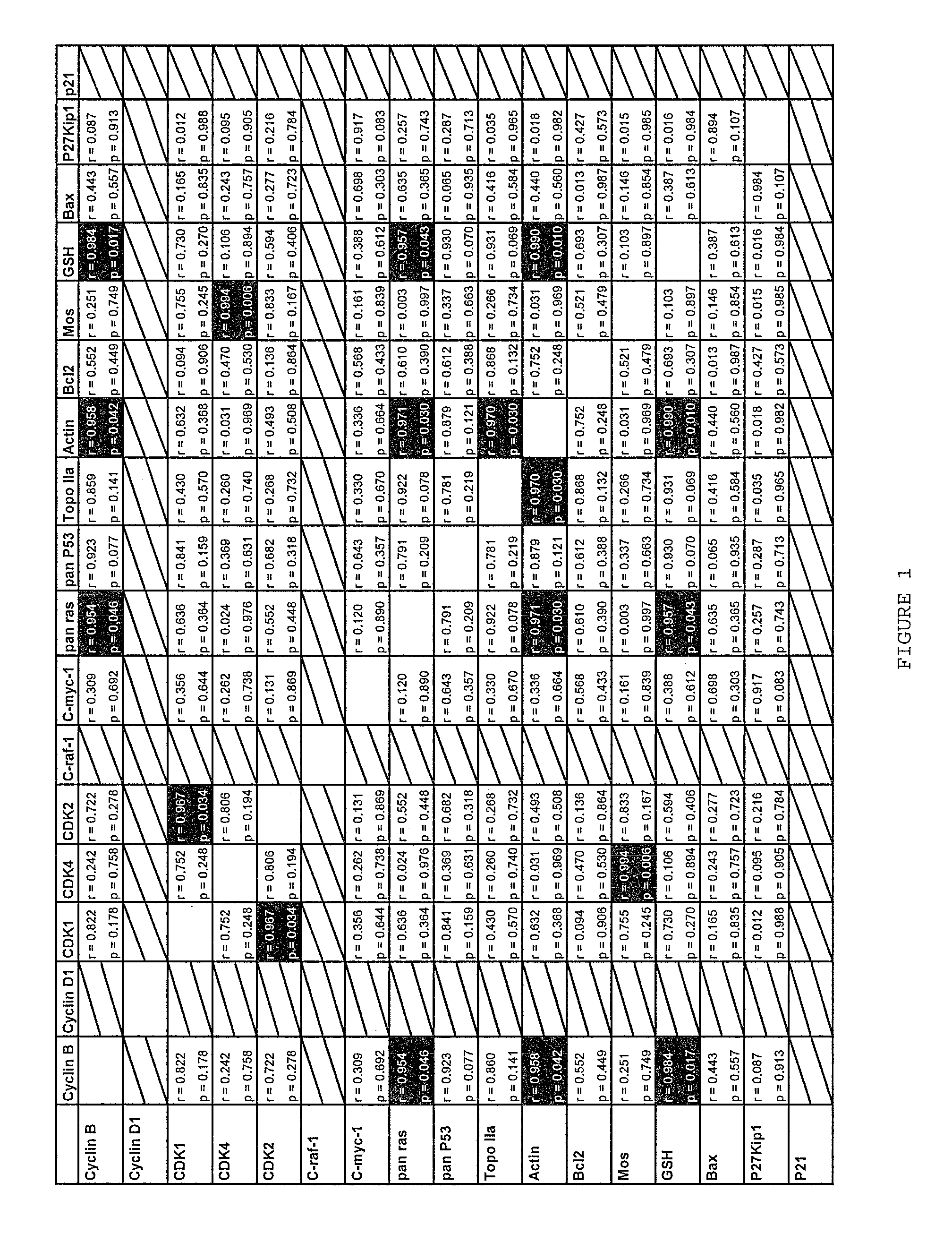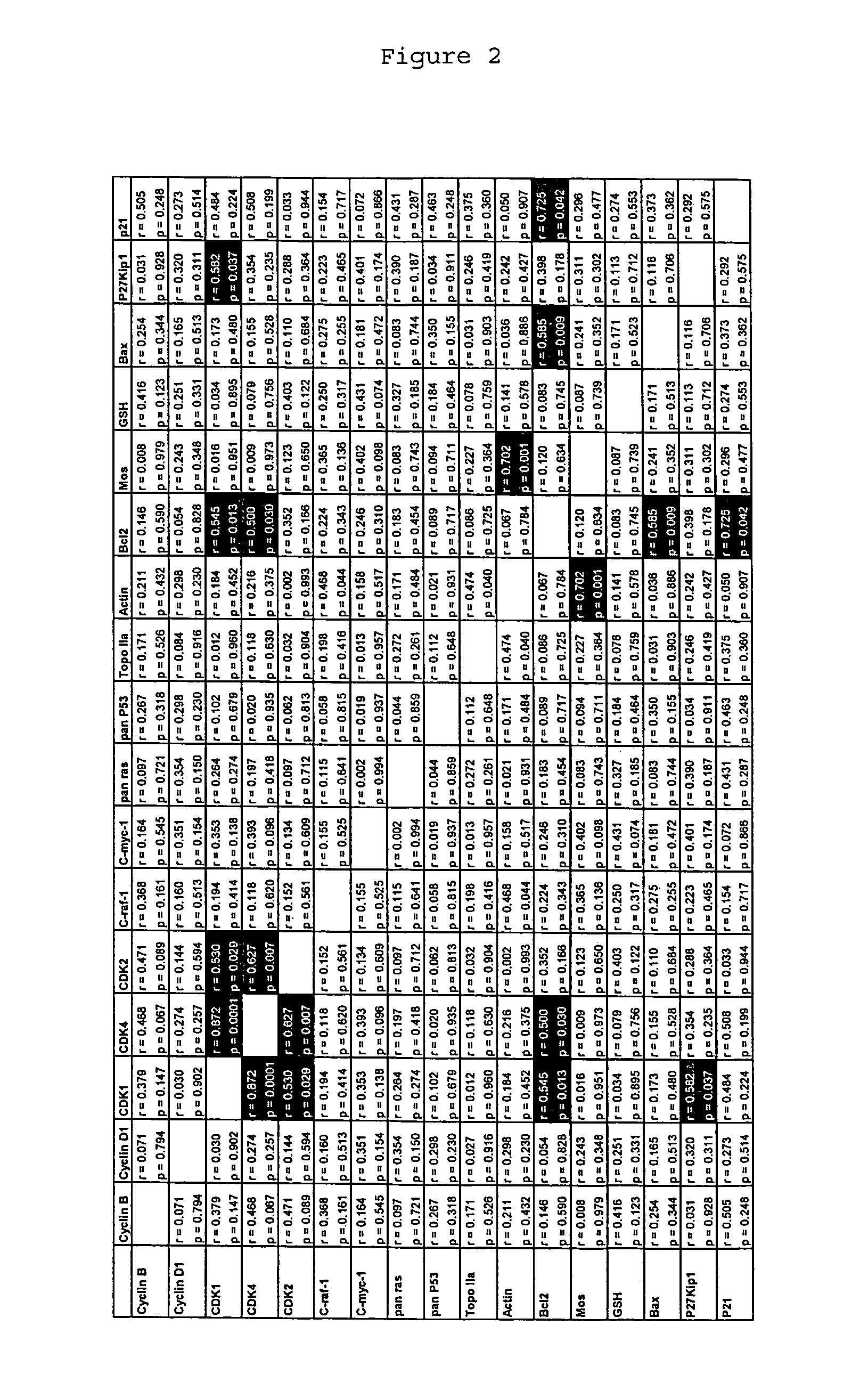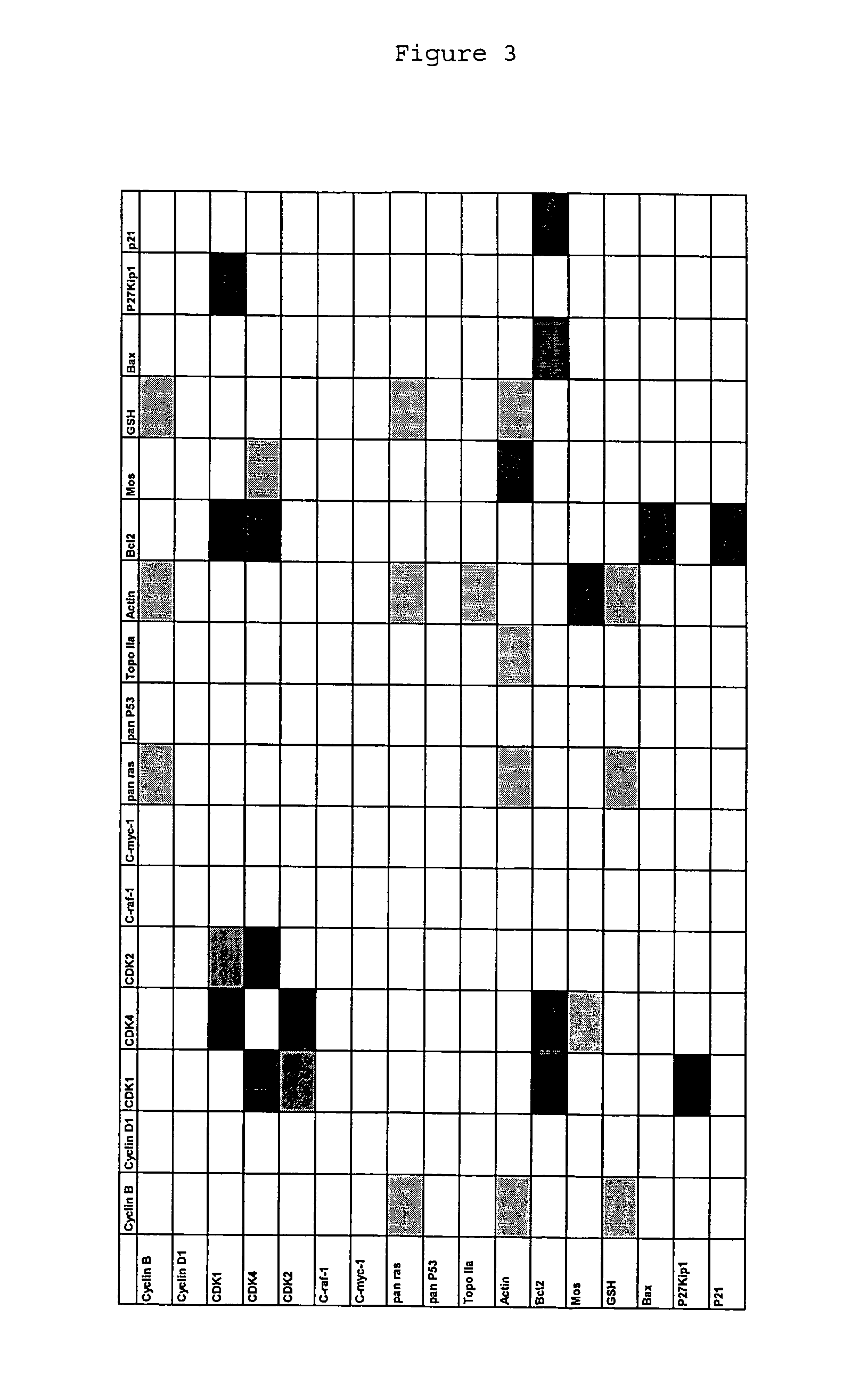Treating cancer
a cancer and peptide technology, applied in the field of peptides and peptide mimetics, can solve the problems of tumour shrinkage, unresponsive tumours to conventional chemotherapy, and clear inadequate current treatments, and achieve the effect of no effect on viability
- Summary
- Abstract
- Description
- Claims
- Application Information
AI Technical Summary
Benefits of technology
Problems solved by technology
Method used
Image
Examples
experiment 1
[0111]It is known that CDK4 protein plays an important role in cancer. However, drugs that inhibit the kinase activity of human CDK4 are ineffective at treating cancer. The inventor hypothesizes that this is because the CDK4 protein plays a role in cancer cells that is independent of its kinase activity. To verify this hypothesis, the inventor attempted to identify the region of CDK4 protein that mediates a role in cancer cells by looking for differences between the amino acid sequence of the CDK4 protein, and the amino acid sequences of the CDK6 and CDK2 proteins, which are highly homologous to the CDK4 protein but which do not mediate an important role in cancer cells.
[0112]The sequences of human CDK4, CDK6 and CDK2 were obtained from the Swiss-Prot and TrEMBL databases, maintained by the Expasy molecular biology server (ca.expasy.org / ). These sequences were aligned using the ClustalX 1.83 algorithm using the PAM 250 matrix, a gap opening penalty of 10, and a gap extending penalty...
experiment 2
[0135]As discussed in Experiment 1, the inventor hypothesized that a region of the CDK4 protein that does not mediate the kinase activity of CDK4 could be responsible for maintaining neostasis in cancer cells. The model of human CDK4 produced in Experiment 1 reveals that the amino acid sequence 248-259 may form a binding site for an unknown protein. To determine whether this binding site is required for the maintenance of cancer cell survival and proliferation, experiments were conducted to determine the effect of interfering with protein binding to this site.
[0136]A peptide encoding amino acids 249-258 was synthesized (in the form of a chloride salt) by standard methods. The sequence of this peptide is given below as SEQ ID NO:1.
[0137]
SEQ ID NO: 1:FPPRGPRPVQ
[0138]A peptide having 80% sequence identity to the sequence of SEQ ID NO:1 was also synthesized as a chloride salt. The sequence of this peptide is given below as SEQ ID NO:2.
[0139]
SEQ ID NO: 2:FTPRGTRPVQ
[0140]These peptides mi...
experiment 3
Testing Further Analogues of SEQ ID NO: 1
[0152]Normal non-cancerous fibroblasts and cancer cells were exposed to the linear hexamer PRGPRP SEQ ID NO: 5 in 96 micro well plates using the same protocol as for SEQ. ID NO: 1 as previously described. The percent viability of the cells in each well was calculated by visual observation under phase contrast microscopy as previously described. In the case of the hexamer, at 7 days there appeared to be stimulation of fibroblast growth. No changes were observed in tumour cells until 21 days and beyond then there was almost total death of cells in the hexamer treated wells whereas the normal non-cancerous fibroblasts remained healthy.
PUM
| Property | Measurement | Unit |
|---|---|---|
| descent full energy minimization | aaaaa | aaaaa |
| pharmaceutical composition | aaaaa | aaaaa |
| drug resistance | aaaaa | aaaaa |
Abstract
Description
Claims
Application Information
 Login to View More
Login to View More - R&D
- Intellectual Property
- Life Sciences
- Materials
- Tech Scout
- Unparalleled Data Quality
- Higher Quality Content
- 60% Fewer Hallucinations
Browse by: Latest US Patents, China's latest patents, Technical Efficacy Thesaurus, Application Domain, Technology Topic, Popular Technical Reports.
© 2025 PatSnap. All rights reserved.Legal|Privacy policy|Modern Slavery Act Transparency Statement|Sitemap|About US| Contact US: help@patsnap.com



